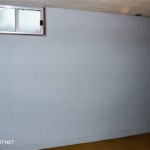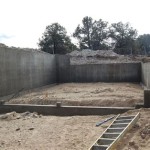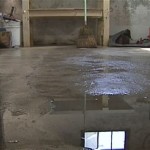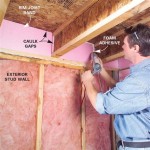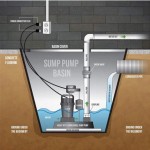How To Seal A Basement
A basement can be a great place to add extra living space to your home. However, if it's not properly sealed, it can also be a source of moisture, mold, and pests. Sealing your basement is an important step to protect your home and your health. Here are the essential aspects of how to seal a basement:
1. Inspect Your Basement for Cracks
The first step to sealing your basement is to inspect it for cracks. Cracks can be found in the walls, floor, and ceiling. They can be caused by a variety of factors, such as settling, foundation movement, or hydrostatic pressure. If you find any cracks, it's important to seal them as soon as possible to prevent water from leaking into your basement.
2. Seal the Walls
Once you've found and sealed any cracks in your basement, it's time to seal the walls. There are a variety of products that you can use to seal basement walls, including hydraulic cement, epoxy, and polyurethane. Hydraulic cement is a good choice for sealing cracks and holes, while epoxy and polyurethane are better suited for sealing larger areas.
3. Seal the Floor
The next step is to seal the floor. There are a variety of products that you can use to seal basement floors, including concrete sealers, epoxy coatings, and urethane coatings. Concrete sealers are a good choice for sealing small cracks and holes, while epoxy and urethane coatings are better suited for sealing larger areas.
4. Seal the Ceiling
The final step is to seal the ceiling. There are a variety of products that you can use to seal basement ceilings, including latex paint, drywall sealer, and vapor barrier paint. Latex paint is a good choice for sealing small cracks and holes, while drywall sealer and vapor barrier paint are better suited for sealing larger areas.
5. Install a Sump Pump
A sump pump is a device that helps to remove water from your basement. Sump pumps are typically installed in the lowest part of the basement, and they work by pumping water out of the basement and into a drain. Sump pumps are an important part of any basement waterproofing system, and they can help to prevent flooding in your basement.
6. Ventilate Your Basement
Proper ventilation is essential for preventing moisture buildup in your basement. Make sure that your basement has adequate ventilation by installing vents or fans. You can also open windows or doors to ventilate your basement.
7. Monitor Your Basement for Moisture
Once you've sealed your basement, it's important to monitor it for moisture. You can do this by using a moisture meter or by simply checking for signs of moisture, such as condensation or mold. If you find any signs of moisture, it's important to take steps to address the problem.
By following these essential aspects of how to seal a basement, you can help to protect your home and your health.

How To Waterproof Basement Walls With Flex Seal Products Youtube

How To Waterproof Your Basement True Value

Waterproofing Basement Walls Dos And Don Ts To Remember Bob Vila

Diy Basement Waterproofing Sealonce System Easy Installation Waterproof Com

Diy Basement Waterproofing By Triad

The 3 Major Approaches To Basement Waterproofing News And Events For Systems Inc

How To Waterproof A Basement Easy Video Installation Guide Sealonce System Com

How To Waterproof A Basement Inside Out Budget Dumpster

What To Know About Waterproofing A Concrete Basement Floor

Waterproofing Basement Walls Dos And Don Ts To Remember Bob Vila


